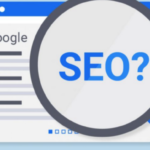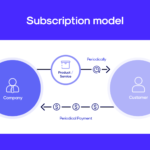Raising capital in general requires a financial strategy behind it that includes two main elements:
- What are you going to do with the capital?
- With what and when are you wanting to pay the capital back?
This strategy aligns with the type of capital (equity or debt) that will be available to you. This is because the strategy and ability to execute that strategy determines how secure you are as a borrower of someone else’s money.
For example, a company that has no revenue yet and wants to use the capital to build a software program over a 1-year period before marketing it and seeing revenue, will have no money to pay a loan back for a good amount of time.
Even at that time, the company might not want to because during a high growth stage it is likely to be better to keep the money in the business than pay off debts. Therefore, in this case the borrower needs to raise capital with terms that allow for a much later pay-back.
Contrast this to the case of a steady and profitable business (even if small). In this case, there are funds in the business to pay a loan back over time from the outset.
It is usually not in the interest of either party if a borrower cannot pay borrowed money back. Thus, a deal would be structured at outset to accommodate the potential plan.
Raising Capital as Debt
Traditional debt requires predefined prepayments of the capital plus interest to be made by the borrower. If the time comes to make a payment on a loan and the company cannot do so and thus defaults on the loan, this could in broad terms cause the business to go bankrupt unless a new agreement was made.
This pressure on a company’s cash flow is the main reason why a start-up that does not have positive net cash flows, and will avoid debt as a means of finance. This is also why they will also likely not be able to get such a loan, since they will likely struggle to prove the ability to repay as defined.
On the other hand, a traditional loan does not come with any ownership of the company. Additionally, once the loan is paid back all obligations are resolved.
Raising Capital as Equity
With traditional equity someone / a company invests in a business by giving capital in exchange for a partial ownership in someone’s business instead of being paid back the loan over time. Their investment is realized when the company sells, goes public, or provides an opportunity for a new investor to buy an existing investor out.
Assuming the value of the company increases over time, so does the value of the equity investment. However, the initial amount invested is never actually paid back (rather the ownership position is sold). This is perfectly suited for startups that do not want to be constrained to pay loans back. This makes most sense when they can be using that money to grow the business.
The key factors here are the amount of capital invested and the proportion of the company given up for such an investment (determined by the valuation of the company).
Given a company is ideally increasing in value over time because it becomes more and more likely to succeed over time given it has made it to each subsequent milestone, there is more interest in the company to raise less money in the beginning and raise more later (when the value is higher, and the money is cheaper).
However, the company does need to raise enough money to get it to the next milestone and to ensure it does not need to raise another round of equity too soon after closing the last round so as to justify a higher valuation at each round. Therefore, balancing the number of capital rounds with the right amount in each and a planned execution plan for each is extremely important to get right. This is one of the key strategies a financial consultant will help with.
Risk vs Reward
Comparing the above, it should be clear that to the lender / investor debt is lower risk than equity. However, in extreme cases, the debt could be paid off by the time a company goes out of business. Usually though, by that time the equity investor would have got nothing. This results in the investment being worth close to nothing.
Given this the required return on the investment by the lender of the debt instrument is going to be much lower than the required expected return on the equity investment (otherwise one might as well take less risk if it offered a higher expected return). Note that the equity return is at risk and hence I used the phrase required expected return.
This also determines the types of investments that are accessible to companies from the other side to what we explored above – the steadier a company the less even an equity investor would want to invest in it because there is less ability to earn a high enough return for the risk taken.
A company will thus usually start off taking more equity and then at later stages take on debt as it grows and its financial performance changes.
The Real World
In the above, we looked at the very traditional theoretical sides of the two types of capital, but in the real world these two types of investments are mixed, adjusted, and combined in many ways that can suit the uniqueness of the parties in the agreement.
For example, a loan can be structured to only be paid back starting in 5 years’ time instead of immediate ( in exchange for a higher interest rate than if it was paid back immediately), an equity investment could be combined with a royalty payment to mitigate short-term risk, or debt and equity could be combined in one instrument. An extremely common instrument which most start-ups start off with is called convertible debt.
Convertible Debt
Convertible debt is a loan that is usually not paid back. Instead, it remains on the books of the company as a loan with accruing interest. This is sometimes seen when the interest is paid out instead of accruing. When the company raises equity later, the owners of the convertible debt may decide to convert their loan into equity. This is usually at a preferential discount to the valuation of that capital raise).
At that point their loan buys an equity stake, and they no longer have a loan. There are a few reasons why this is so popular:
- Since there is less risk in a loan than equity, less due diligence must be done on the business. This is useful in the case of a brand-new company that has little to base a valuation on. Or, when a small amount of capital is raised that isn’t worth the time and effort to go over.
- From the company’s perspective, this allows for the business to get to a first milestone before defining its value. This should ideally increase its value ,and thus result in them giving away less of their business.
- The highest risk is at the outset when a business is just an idea. Thus, it helps to mitigate the risk of this stage for investors by starting their investment as a debt. In addition, to do this while also giving them the option to later be privy to upside of the company.
Who to raise capital from?
Debt instruments would typically be provided by banks or family / friends. The latter would likely be more suited to convertible debt. Equity is usually provided by angel investors (individuals) or institutions such as VC’s or family offices. These institutions would also invest on behalf of other individual investors.
The earlier the company, the less likely an outside party is to invest. This is because all there is to go on is the team. Thus, to set up the company it is usually the founders and family / friends investing.
Once the company has at least proven the concept (one of the most important milestones in a start-ups life and is often done on a limited scale to not cost too much while still being of value) it starts to be appetizing for angel investors that are more outside of the founder’s personal network.
At later stages the company will be expected to prove some success. This is often the ability to scale the smaller proof of concept done initially. At this point, they can warrant larger amounts of investments, and VCs are usually sought out.
Banks typically work with later stage /larger companies with predictable revenue. Otherwise, small companies with a good amount of history of revenue and/or profit. This is unless personal guarantees or the likes can be given.
Leverage
Leverage happens when there is a mixture of equity and debt raised in a company. Additionally, it is an important piece of maximizing returns for equity investors when possible. This is done by putting cheaper capital (the debt) to work for the additional upside benefit of the equity investors. This mix drastically changes the risk profile of the business. Thus, optimizing this mix is extremely important as a company grows in its later stages.
In Summary
There are many options in between the two traditional forms mentioned above. However, the typical is such that the earlier stage of a company, the less predictable the cash flows of a company, the more delayed the revenue / profitability of a company, the higher the risk profile, the higher the potential upside / growth of a company, the more chance both the borrower and the lender will be structuring the capital as an equity investment in exchange for ownership of the company than as a debt instrument in exchange for interest.
With all the variations and the need to plan out each stage of capital raised to optimize value for the founders and existing investors, it is valuable to work with a financial consultant to help navigate and optimize this overall plan.
AngelytiX Consulting has been recognized as one of the Top Consulting Firms In Los Angeles by DesignRush.





